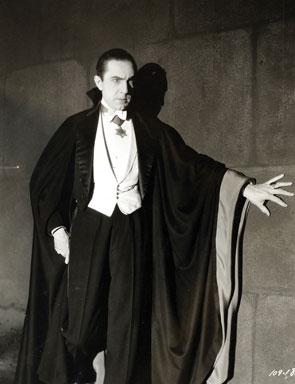Horace Liveright had an outsized influence for his somewhat foreshortened years. Initially a bond trader, he eventually moved into publishing where he founded the Modern Library as well as Boni and Liveright. The Modern Library still exists, now as an imprint of Random House. Liveright ceased publishing operations eventually, but the name was revived as an imprint of W. W. Norton. There have been many publishing Wunderkindern, including Richard L. Simon, co-founder of Simon and Schuster (and father of Carly Simon), and the Scot William Collins whose name still appears in HarperCollins. While reading about Liveright recently I learned that he also was responsible, in an unexpected way, for the development of the horror film.
Liveright never worked in the film industry. He did, however, work as a stage producer in New York in the 1920s. Among his most successful works was a play titled Dracula. It starred Bela Lugosi and Edward Van Sloan as Dracula and Abraham Van Helsing, respectively. The success of the Broadway show caught the attention of Hollywood and Lugosi and Van Sloan were cast in the same roles in Tod Browning’s Dracula, widely considered to be the first horror film, released in 1931. Van Sloan went on to appear in Frankenstein as well, and Lugosi reprised his Dracula character as well as several other monsters. It’s possible, perhaps likely, that horror would’ve begun with some other entry into the genre, but as history stands Dracula, based on Liveright’s stage production, started the whole thing.
Unless we work in it, we tend not to think about publishing too much. We don’t pay attention to the publisher of the book we’re reading, and who lingers over the copyright page? Giving a thought to these details, however, often adds new stories to the ones between the covers. A fellow editor is fond of saying that books are as much about the author’s story as they are about the story the author’s telling. The press, for example, often focuses on the former. Who is it that wrote this book and why? The question may be extended further—what publisher took it on and how did they even get into the business of deciding what people will read? The internet has democratized that quite a bit, of course, and some authors can become their own authorities by knowing how to handle it. So I’m taking one such opportunity to highlight the work of a sometimes forgotten pioneer who nevertheless began a publishing venture from which we’ve all most likely read. And he also helped created the horror movie.

